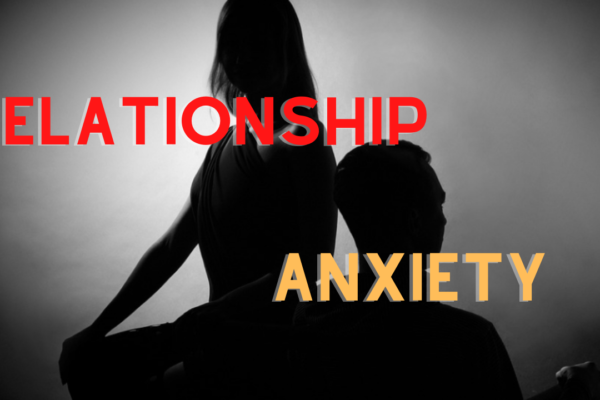Table of Contents
How To Cope With Depression in 12 Proven Steps: Step 3
In this post, I will cover:
- Talking back to your unhealthy thoughts
- Exploring the evidence
- Exchanging distorted thoughts with helpful ones
- The CBT mantra: “Catch it, Check it, Change it.”
Exploring the Evidence
As mentioned in the previous post, How To Cope With Depression in 12 Proven Steps: Step 2, it is vital that we learn the habit of of being mindful to the nature of our thoughts in correlation with our mood, and we have been discussing the use of mood and thought tracking to do this.
In this post, we will be going one step beyond thought tracking, and move into thought challenging, via Exploring the evidence for our thoughts. Learning to track your thoughts and your mood via use of mood scales, or a related tool, was a preliminary step, because next we will need to write them down and put them in the hot seat (meaning we will seek out facts to either support or negate their claims).
STEP 1: Write Down The Thought. In your mood and thought tracking, when you notice a thought that lowers your mood, you want to write it down verbatim.
STEP 2: Examine the Thought. List the facts supporting the truthfulness of faults in the reasoning of the thought/statement. Now ask yourself if your believe that the thought is true or false.
STEP 3: Share Your Thought With Another Person. It is not enough to take our own counsel. Seek out someone who’s opinion and judgement you trust, and get their feedback on the thought, or better yet, get more than one opinion. Now take into account all the evidence and come to your OWN determination.
STEP 4: Collect More Evidence and Test Your Theory. It is perfectly normal to be divided on your own thoughts and concerns, especially when there is not sufficient evidence or if the experience is very subjective. In these cases, it is vital that you learn the importance of testing your assumptions.
Example: You want to ask for a promotion at work. Your initial thought is “I would never be considered for a promotion because…”. You do the fact finding and are still unsure of how your request would be received. The only way to test your theory is to ask/apply, get feedback and then reconsider your assumptions. In most cases, the initial negative or derogatory aspects of the thoughts are not valid, but you will discover other meaningful feedback that provides you with a better understanding of what the obstacles are. In turn, this will put you in a better position to adjust your thinking and approach around the subject to improve future outcomes by making informed decisions as opposed to acting on unfounded assumptions.
This holds true for most things that we feel anxious about; social acceptance, dating, occupational goals and the like.
Rate Your Thoughts: After you feel that you have gathered adequate feedback from your environment, now you want to reassess and rate how helpful or unhelpful, accurate or inaccurate, your initial thoughts was.
Locate A New Thought to Exchange for the Old, Unhelpful One
Application: Now that you are learning to be more mindful, take the time to check in with your thoughts when you notice your mood is low. For me, it is usually helpful to stop what I am doing in the moment, and take a deep breath or two, and focus my attention on the present. Are you able to identify your thoughts? Do they feel helpful, or unhelpful?
Next: Practice replacing your unhelpful thoughts. Do you notice your train of thought changing in relation to your new thought? If so, have your noticed your mood follow? Exploring the evidence for your thoughts is crucial in your mental health journey.
Remember the ABC’s of CBT: You will know if your replacement thought is a good choice, because it will be accurate, balanced and complete it its nature. Unhelpful thoughts will fall into one of the unhealthy thought patterns discussed in the previous post.
The CBT Mantra: “Catch It, Check It, Change It.”
Catch It: The fist step in improving your mood is to get faster at catching your unhelpful thoughts. That is why we have been using mood scales and tracking on paper, to build that muscle , with the understanding that once it becomes a habit for you, that you can do it in your head; we are trying to improve your reaction time, so that you catch it before it manifests into your mood and subsequent behavior/speech. Remember also, that even though feelings tend to follow thoughts, feelings are easier to catch and are often our starting place, and then we work backwards to explore what we were thinking when we were triggered.
Check It:
- Inaccurate: Is the thought false? A usual tell for this would be if the thought is very absolute or rigid and/or derogatory.
- Incomplete: Usually a half-truth. With these, we tend to focus on only a negative partial assumption, and leave pertinent facts out of the equation…e.g. “I failed in my marriage” vs “my marriage failed because my partner and I could not come to terms after they had an affair.”
- Unbalanced: This is the extreme, exaggerated and global view of a problem, usually in relation to ourselves…e.g. “nothing ever goes right for me.”
If our thoughts are left unchecked, and contain any the above factors, then they are at greater risk of dragging our mood down.
Change It: As mentioned earlier, once you have identified an unhelpful thought, we have to play it through and replace it with an accurate, balanced and completed thought that serves us, versus thoughts that work against us. It is not enough to simply ignore our harmful thoughts, because then there is no actual change in the direction of our thought process; we have to pivot.
Practice
Exercise: Practice the Catch it, Check it, Change it manta.
- List the triggering event: what happened?
- Take note of your feelings in response to the trigger.
- What were your associated thoughts when triggered?
- Examine your thought for accuracy, balance and completeness.
- Replace/Exchange the thought for a more helpful and true one (hint: seek understanding versus blame, show self-compassion and compassion toward others).
Looking Ahead
Up next: In my next post on fundamental coping skills for depression, I will be covering:
- Techniques for changing unhealthy thoughts into useful ones
- How to increase you helpful thoughts
- Identifying helpful thoughts
- Balancing thoughts with “yes, but” statements.
- Planning for a worry time.
Question: Did you practice the skills we discussed? How was it tracking your mood and/or your thoughts and trying to replace your thoughts? I would like to know what your experience has been like. Please leave a comment below to let me know how it is going and feel free to ask any questions you may have.
It is my mission to equip you with valuable and effective coping skills and clinical interventions, to improve your mood, be more productive and improve your quality of life, so you can do more, and worry less.
ASK: If you have a question you’d like me to answer here on the blog (even if you think it’s a silly one!), please use the form on the CONTACT ME page, or the comment section below. I would be happy to take a poke at it and provide a long form answer when appropriate.
SHARE: Also, be sure to share it with a friend, as there is still a lot of work to be done in raising mental health awareness.
SUBSCRIBE to get your FREE MOOD TRACKING TOOL and quick Mental Health Hacks in addition to this newsletter. Sign-up with the form below.
Recommended Reading
Heads up: This article/page does contain affiliate links to products sold on Amazon, which I recommend in the context of this discussion, because they have proved to be helpful to me and/or my clients. As an Amazon Associate I earn from qualifying purchases by way of commission at no additional cost to you.

NEED CRISIS HELP? If you need immediate crisis help with your depression, you can call the National Suicide Prevention Lifeline at 1-800-273-8255 or text “START” to 741-741
OUTSIDE THE UNITED STATES: See International Suicide Hotlines
WHERE TO FIND MENTAL HEALTH HELP:
-NAMI Referral Helpline: 1-800-950-6264
-California’s Statewide Mental Health Helpline: 1-855-845-7415
The fundamental coping skills for depression being covered over the next several posts are derived from an evidenced-based practice of psychotherapy known as Cognitive Behavioral Therapy (CBT), in which I am certified to practice by the Academy of Cognitive Therapy. For those who are not familiar with theoretical models or therapeutic interventions, an evidenced-based practice (EBP), is a term that describes “a best practice”; one that has been tested and researched and shown to be an effective treatment for a specific condition with results that are sustainable (the scientific method). Aaron T. Beck is the father of Cognitive Behavioral Therapy, and the skills discussed in this series of posts are derived from his work (and his cohorts) which are referenced at the end of this article.
References:
Group Cognitive Behavioral Therapy for Depression:-Jeanne Miranda, Ph.D; Stephanie Woo, Ph.D.; Isabel Lagomasino, M.D., M.S.H.S.; Kimberly A. Hepner, Ph.D.; Shelley Wiseman, B.A.; and Ricardo Muñoz, Ph.D. Revised August 2006.
admin
Latest posts by admin (see all)
- Thriving with Autism and ADHD: Expert Strategies for Managing Burnout - April 22, 2024
- Serial Killer Spotlight: Dr. Caparelli’s True Crime Analysis - April 14, 2024
- Donna’s Law: Stop Gun Suicides - March 22, 2024









